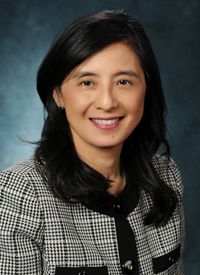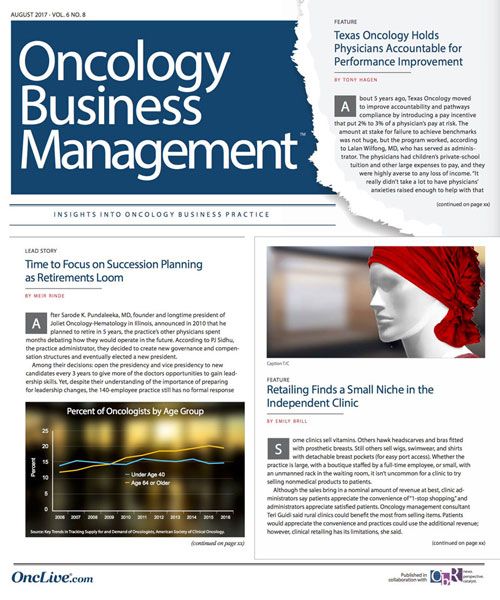Using Population Science to Fill in the Blanks
When it comes to treating older populations for cancer, it’s often the case that the only available data are based on trials of younger patients in far healthier condition.
Grace Lu-Yao, MD

Grace Lu-Yao, MD
Not enough is known about older populations of patients with cancer. They tend to be frailer, they have comorbidities, and they may be on multiple medications. Yet when it comes to treating them for cancer, it’s often the case that the only available data are based on trials of younger patients in far healthier condition.
All of that is about to change, says Grace Lu-Yao, MD, a pioneer in the use of big data to gain clearer understanding of how patients with cancer are affected by treatments. Lu-Yao, for example, worked with the Prostate Patient Outcomes Research Team on a large-scale study to document the treatment patterns of prostate cancer and to understand the value of conservative management for low-risk prostate cancer. The finding, first published in the Journal of the American Medical Association in 1993,1 was so revolutionary at the time that it was initially resisted by the cancer community, which had difficulty accepting that quality-adjusted life years saved following conservative management of prostate cancer could be roughly equivalent to surgery or radiation therapy.
Clinical data-sharing partnerships established this summer by CancerLinQ, the FDA, and the National Cancer Institute (NCI) may bring more discoveries like this. Under these agreements, vast amounts of patient data—essentially real-world evidence (RWE)—will be shared among these institutions and the many cancer treatment centers operating across the United States. What happens in the community clinic, for example, will be relayed to the FDA to help inform drug policy decisions; and what is gathered and stored in the NCI’s Surveillance, Epidemiology, and End Results program will be available to far-flung clinics that need to know how a certain drug will affect geriatric populations—something that only recorded data gathered from multiple cancer centers may show.
“The difficulty we have is that most evidence, the gold standard, comes from clinical trials,” said Lu-Yao, associate director for Population Science at the Sidney Kimmel Cancer Center at Jefferson University in Philadelphia. “Yet clinical trials a lot of the time really are quite stringent. Their criteria are such that about half of elderly patients will not be eligible for clinical trials. Therefore, the result from clinical trials may not be applicable to these so-called vulnerable or frail populations.”
Lu-Yao, a widely respected epidemiologist, said that population science is made for this new wave of RWE. Many of the studies she has done have been based on analyses of large data pools, and her insights into prostate cancer treatment exemplify how investigation of existing information can be as useful as active trials that involve tests of drug efficacy. In other words, much information already exists. It just needs to be crunched and interpreted and put to good use.
More data are exactly what is needed to improve geriatric oncology, agrees Hyman Muss, MD, who directs the Geriatric Oncology Program at the University of North Carolina (UNC) Lineberger Comprehensive Cancer Center. Checkpoint inhibitors are so new that not enough is known about how they should be used in older populations. “Very few older patients have been on these studies, so we really don’t know how they fair with these treatments, especially when it comes to fatigue and functional change. I suspect there are not going to be dramatic differences in nausea and vomiting and other adverse events, but to take an older patient who is barely making it in the community [because of existing health problems] and add profound fatigue or some muscle weakness is going to really change that patient's life, and we know very little about it,” Muss said.
The shortcomings of clinical trials can be remedied in various ways by the broad sweep inherent in big data analysis, Lu-Yao explained. Rare adverse events that would not be spotted in smaller patient samples will be recognized and cataloged in the larger analysis. This can remove more of the uncertainty from the treatment process.
Lu-Yao has a special interest in developing risk-assessment tools that incorporate aggregated patient data and clarify the potential problems from a given medication. At Kimmel, she and others are building the first race-specific prediction model for prostate cancer. This would incorporate biomarkers, comorbidity status, and all clinical prognostic factors so that physicians can tell patients how likely they are to have disease progression or die from competing causes. The tool would enable doctors to judge whether aggressive treatment is a good option for a patient.
The Population Science center at Kimmel was created to enable integrated, multidisciplinary teams to make cancer-related discoveries and translate those findings to the clinical setting, with special emphasis on addressing the health needs of Philadelphia region. The diversity of this area makes understanding race-specific health issues paramount. In the greater Philadelphia area, the mortality rate for prostate cancer among African American men is twice that of white males. Currently, Kimmel is doing an intervention study in the poorest neighborhoods with the highest cancer burden to learn how education and changes in lifestyle can reduce the burden of cancer, Lu-Yao said.
Studies of dietary intervention and other forms of holistic care are fundamental to those investigations, she said. The Population Science team is conducting the first in-field human trial in breast cancer and prostate cancer patients to determine the value of caloric restriction as a therapeutic intervention. “In animal studies, we found that caloric restriction could delay metastases substantially, to a point almost comparable with radiotherapy, and it can improve treatment response of radiotherapy and chemotherapy. These results are really impressive,” Lu-Yao said.
She believes that if a clinical trial can demonstrate that caloric restriction is effective in delaying cancer metastasis, the implications in how cancer is managed would be huge. “We all know even the very expensive novel cancer therapies develop resistance, even in a few months, and dietary intervention is relatively safe by comparison, and it’s much more cost-efficient and less likely to have drug-resistance issues.”
The holistic approach to care also is endorsed by Muss, who is working with collaborators from the Duke Cancer Center, MD Anderson, and UNC to understand how exercise may slow or impede the process of rapid aging that occurs in patients who undergo chemotherapy. “Our treatment ages people, and what we’re trying to do is look at how simple interventions like exercise—a walking exercise—affects molecular changes reflective of aging and cell senescence. We’re monitoring people with Fitbits, we’re using a simple walking program, and we’re measuring their molecular markers of aging. It’s really a lot of fun, and when they’re done with treatment, we’re trying to enroll these older patients in special rehab programs that can keep them as functional as possible with a strategy that is very scalable,” Muss said.
In July 2017, Kimmel launched the Neu Center for Supportive Medicine and Cancer Survivorship, which will examine how quality of life, resource utilization, and cancer outcomes are improved by psychosocial support services. “We have applied ourselves to provide holistic care, not just to treat cancer but to treat the whole person,” Lu-Yao said.
Although her team’s findings in low-risk prostate cancer and conservative management took years to achieve acceptance from the broader cancer community, Lu-Yao said it is important to ensure that findings are corroborated. After nearly 2 decades, Lu-Yao and her team are now enjoying official confirmation of their research findings and the impact on the management of prostate cancer patients around the world. In 2010, the National Comprehensive Cancer Network adopted active surveillance as one of the viable options for patients with low-risk prostate cancer; and last year, the American Society of Clinical Oncology included active surveillance as an option for patients with low-risk prostate cancer.
1. Lu-Yao GL, McLerran D, Wasson J, Wennberg JE. An assessment of radical prostatectomy. Time trends, geographic variation, and outcomes. JAMA. 1993;269(20):2633-2636.




